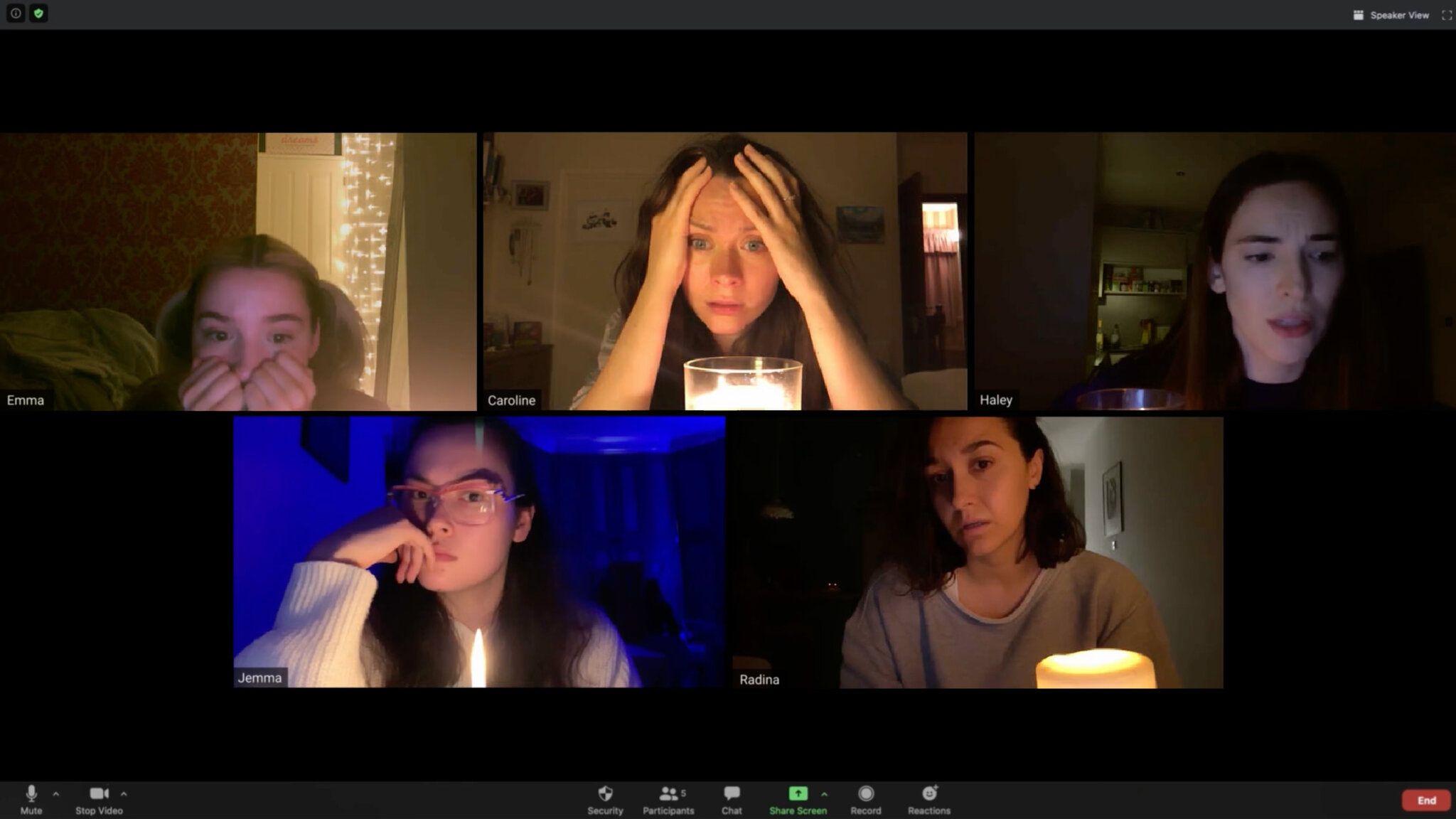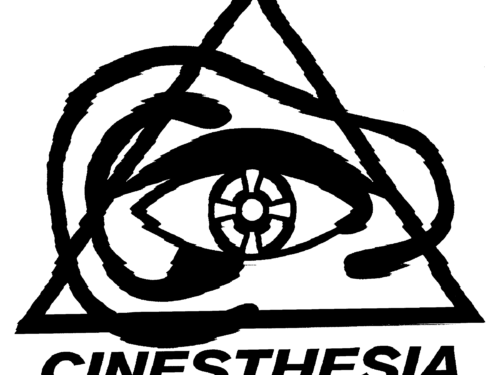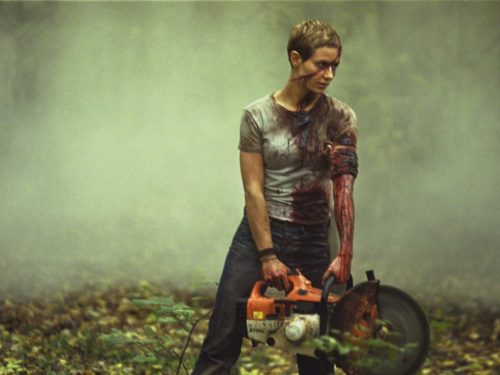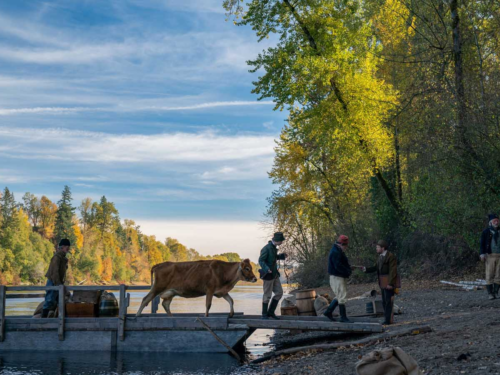Filmed entirely during the height of lockdown, Host captures a unique moment of terror in the way we lived it — with an added demon
If you believe the science from 2022, Rob Savage’s Zoom-inspired lockdown film Host (2020) is the scariest film ever made. According to the Science of Scare Project, the winner was determined by measuring the heart rates of participants while watching a series of 40 horror films selected from Reddit recommendations. Host provided audiences with the highest average heart rate at 88 beats per minute, with a peak average of 130. What does all this mean? The testing itself may not be perfect, but Host is short, freaky, and wastes no time reaching the scary parts. How many horror films lose steam in their efforts to fill a 90-minute feature runtime? Paying customers rightfully demand their money’s worth from sky-high ticket prices, but the 65-minute Host utilized its unique time of release to deviate from industry standards to create a horror film that eliminates excess story and, once it hits its stride, accelerates through to the end.
Host began as a two-minute short that went viral. Savage struck gold while pranking his friends on a Zoom call. He told a group that he’d been hearing footsteps in his attic and went to investigate with the aid of a pre-recorded video. It’s a master class of a horror short where the others on the call — who were unaware of what Savage was up to — all start to lean in and squirm as the camera spins in a slow circle in the attic before a creature pops out. Savage ends up motionless, flat on his back at the base of a ladder. Shudder ordered a full-length original release, and after the film’s success, Blumhouse Productions offered Savage a three-film deal. More than anything, Host proved early in the pandemic that even with massive constraints, there is still a path for a little creativity to carry ideas a long way.
Watch Rob Savage’s original Zoom prank that led to Host below:
I’ve been hearing strange noises from my attic… from Rob Savage on Vimeo.
The movie was shot in 2020 during lockdown, which really is a perfect setting for a horror film. Everyone is home, the world is on pause, and physical contact is legally limited. Intense boredom is also a factor. Haley (Haley Bishop) invites five of her friends to a guided online seance. They join with a mixture of emotions. A few are nervous, some cautiously optimistic, and some tag along for a few drinks and a laugh. Haley makes it clear that she believes in the spirit realm and wants their guide, Seylan (Seylan Baxter), to have a receptive group. Each character has their own reservations during the meeting. Haley looks like she’s been following the news too closely and also seems to suspect that her apartment may be haunted. Jemma (Jemma Moore) is Haley’s best friend and participates because of their relationship, but that won’t stop her from finding ways to entertain herself, at Haley’s behest. Radina (Radina Drandova) moved in with a boyfriend she’s only been seeing for a few weeks. The course of lockdown has proven them to not be a compatible match. Teddy (Teddy Linard) is in a relationship with a new girlfriend who the others are not fond of. Emma (Emma Louise Webb) tries to stay positive but her spirits are sagging. Caroline (Caroline Ward) is home with her family and is the most uncomfortable with the seance.
Seylan admits she has never tried a seance over a video call before, but she assures the group that, so long as everyone follows her instructions, the risks are miniscule for anything to go awry. She tells them to visualize that they’re all together, sitting in a circle holding hands and that they are each attached to a rope they can cut that allows them to leave the circle and the spirit realm. They react with varying degrees of sincerity. Teddy has already proposed they take a “cheeky little shot” whenever the words “astral plane” are uttered, and the instructions don’t convince him to be more serious. Though they drink offscreen, Haley tries to hide her embarrassment. Seylan throws on some mood music to align them with the astral plane. She tells them to pay attention to knocks, candle flickers, or pressure as if someone is touching them.
In the long list of horror movie rules, never play with a ouija board ranks up there with don’t turn your back on the bad guy — even if he’s on the ground with a knife in his chest. Host adds a slight wrinkle to that: If you participate in a seance, don’t invoke a fictional spirit. As the seance progresses, the film does a great job of introducing tension and turning it into a gag. Seylan receives a delivery with a loud knock at the door right as the group begins to feel some escalating nerves. They examine every little candle flicker or green lens flare as if it may be a spirit passing through, until Jemma stands up screaming that she felt something touch her. She says it’s a person from school who once helped her, but had since taken his own life by hanging himself. When some books fly off of Seylan’s bookshelf and she is abruptly disconnected from the video chat, Host pivots in a major way. Delaying the horror until partway through creates a buildup that is more satisfying because of it. Once Host plunges into horror it does not let up. With a wink, Jemma tells the group that she created “Jack” because she was bored and needed to enliven the seance. When everything appears to be safe, the film hits its stride.
The simplicity and constrictions involved in making a film over the computer when no one could be in the same room invited a creativity that an on-set shoot may have missed. Without a massive budget, the crew was forced to make terror from household items: a blanket, a bag of flour, an attic. The most memorable moments come from ideas teased early on — Emma’s facial recognition filters, Caroline’s looped background video, Teddy’s music box. At first the evil spirit appears in brief glimpses, often occupying only the corners of frames.

In a special feature on the Ghostwatch Blu-ray, Savage and producer Jed Shepherd note how the BBC’s 1992 Halloween prank gone wrong hides the ghost in plain sight and teases audiences with something they might notice but won’t fully comprehend. The subliminal horror is always present in Ghostwatch, and only in rewatching the film do you realize how many times Pipes says hello. Throughout Host we feel something lurking. Though nothing is overt in the shadows at first, the background maintains a certain menace, a hair-raising sensation to investigate further. This is true from the beginning. While waiting for others to join the call, Haley investigates her closet after hearing a noise. Though it was just some item falling, the darkness implies an impending dread, an if-you-look-too-closely-you’ll-see-the-face-of-evil type horror. The early unease is just a pump fake, but it urges viewers to pay attention to the minutiae within each character’s background.
Related: Unfriended: Dark Web, COVID-19, And The Thrill Of The Small Screen by Bennett Glace
In an interview with HeyUGuys, Savage says that they created a version of the film with music over the jump scares and asked their sound designer to replicate the feeling of the horror beats without the music. Everything audio-wise needed to be something that could actually happen on a Zoom call without the aid of non-diegetic sound. Zoom was on board for the project. With assistance and permission from the company to replicate the platform, the actors mounted their phones on their laptops for better picture quality and the crew simulated the look from there. Savage directed the film entirely at home, with all the actors filming themselves and throwing out ideas as they shot. He wanted the film to be about lockdown and the unique isolation of the time, so for it to be filmed in the style that everyone was living at the time adds an extra layer of reality.
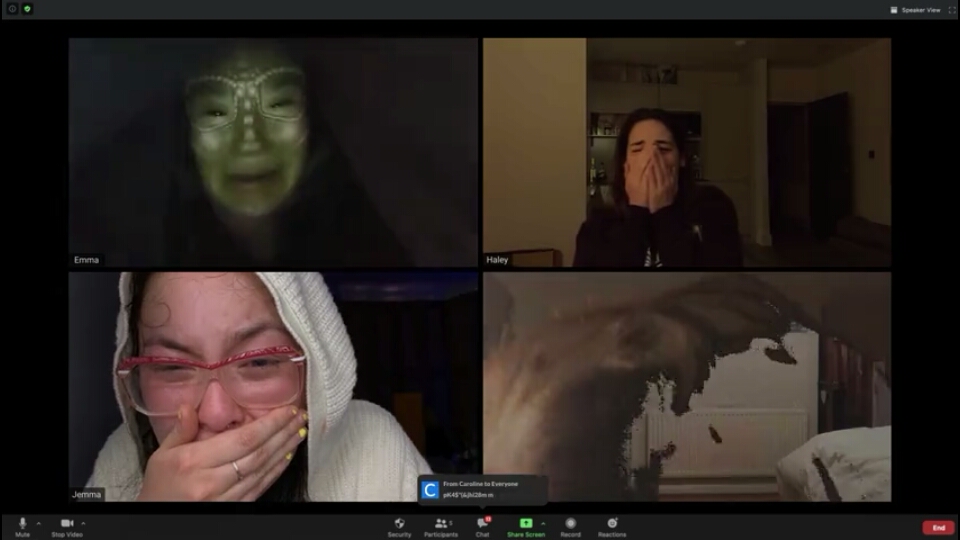
Savage wanted to follow Host by creating what he calls the opposite type of film — something that Host fans might struggle to enjoy. Dashcam (2021) is filmed as a Covid-era live stream. It follows Annie (Annie Hardy), a musician who hosts an improv music show from her car. She travels unannounced to the UK to surprise an ex-bandmate and, after infuriating him and his girlfriend, fights an incontinent supernatural demon. Savage says the works are companions in the sense that Host is the isolated lockdown film and Dashcam is the broader pandemic film. The attempted magic trick of Dashcam was to take an entirely unsympathetic lead character — a loudmouthed, Covid-denying anti-vaxxer provocateur who never once makes a selfless decision — and make them “likable” through the ordeal. Fine idea; terrible execution. All of the characters in Host are vulnerable, most are kind and respectful of others and viewers should have no problem rooting for them to survive. If Dashcam is supposed to be the opposite, Savage at least succeeded in that regard. And though both films share similar runtimes, their approaches — and success rate — could not be more different. Host is immersive because of how natural it feels and how invested we become in the situation. Despite its intentions, Dashcam is exhausting because it can’t resist the urge to give Annie a heroic outcome. Instead of creating an irritating character who we grow to empathize with, it follows a path of empty rebellion, and when given a chance to redeem itself, the entire film figuratively vapes in our faces.
In the best of ways, Host is a product of its times. Without the pandemic, Zoom wouldn’t be a verb on par with Tweet (though both lifespans may be brief). The real lesson from Host is to let the story lead the production. The perks of a shorter film are numerous. Savage speaks of how while watching a 90-minute horror movie, you can usually tell exactly when and where it will go with familiar beats, tropes, and redemption arcs. “An hour-long movie can do things that a 90-minute movie can’t,” Savage said. “An hour-long movie can be whatever the movie tells you it is.” Most consider it the first Zoom and lockdown film, and it captures so much of what that period felt like. With greater distance from the days of lockdown, it will be interesting to see if Host still raises heart rates in the same way. What future pandemic films will likely lack is the ability to faithfully recreate what the period of lockdown felt like. That makes the final scene stand out, which was shot under very real lockdown restrictions. When Jemma runs a few blocks to save her friend from an evil poltergeist she still grabs a surgical mask. They elbow bump instead of hug. Even on a rescue mission and in the face of a deadly entity, the virus was just as scary. That’s something that future generations will (hopefully) never understand. Host harnesses that fear and wisely mixes it into the conclusion instead of trying to skirt the lockdown protocols. By absorbing the world it was made in, Host accomplished a rare feat: it captures the fear and anxiety of the period and mixes supernatural dread in with it.
Stream Host on Amazon Prime
Find the complete October Horror 2023 series here:
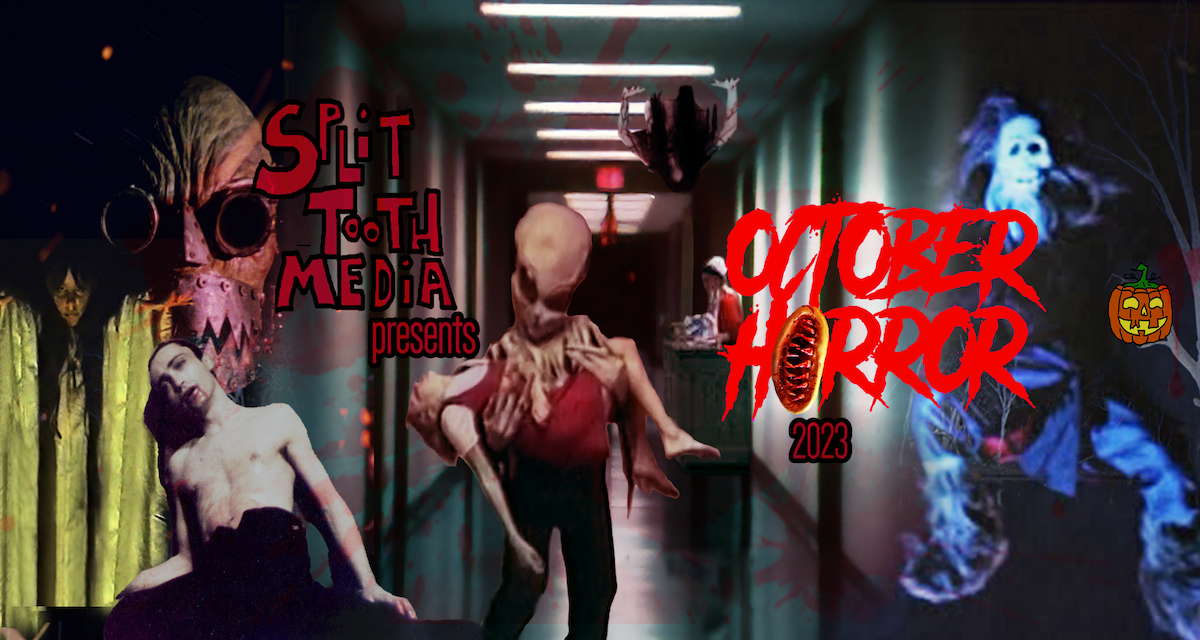
(Split Tooth may earn a commission from purchases made through affiliate links on our site.)

